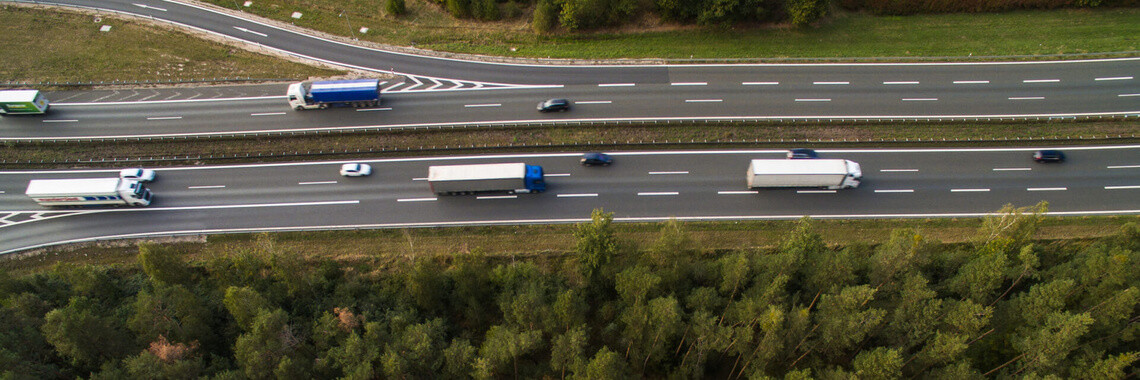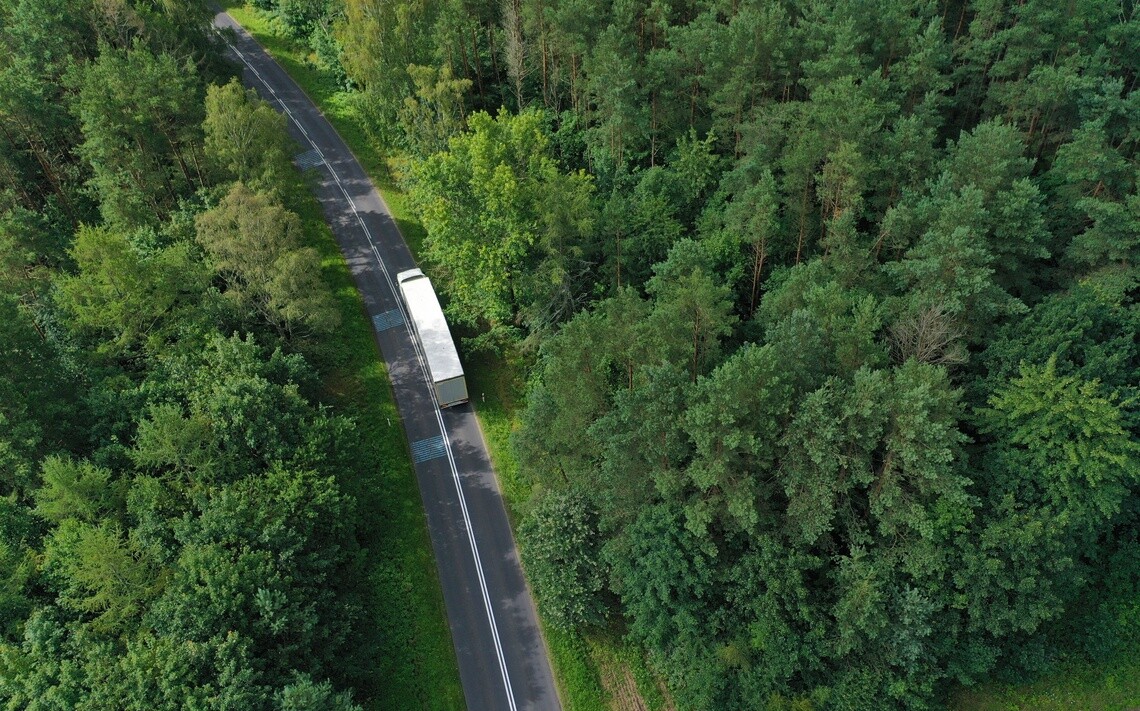
00 header reduce your fuel consumption by using energy saving tyres
Portrait of confident truck driver on parking lot. Copy space.
Current economic and environmental stakes are putting more pressure on when it comes to fleet tyre management and picking the right strategy. With inflation still running high, reducing energy consumption becomes a priority. Michelin has developed MICHELIN X® MULTI ENERGY™ Z2 and D2 energy saving tyres for long-haul and regional use to help fleets master their energy costs and fuel economy. François LE HEN, (Director of Product Marketing), Frédéric DOMPROBST (Pre-Development Truck Tyre Designer) and Damien BARDIN (Development Truck Tyre Designer) tell us more about it.

01 françois le hen frédéric domprobst and damien bardin tell us about fuel efficient tyres
Can you share some insights on the current factors affecting fleet efficiency today?
As a fleet manager, your eye is constantly on your fuel economy. Diesel fuel is costing you more, so better fuel efficiency is a key goal.
You’re also monitoring CO2 emissions thanks to revised VECTO ambitions. Euro 7 regulations will come into force for trucks and buses in July 2028, and will place stricter limits on various pollutants, such as NOx and particles when braking.1
Finally, you might be facing a driver shortage, which can put additional pressure on your fleet operations. As you bring in new hires, they may still be in the process of mastering fuel-efficient driving techniques, which are crucial for optimising performance and reducing costs.
Taken together, fuel consumption, particle wear and CO2 emissions are everyday challenges that impact your fleet efficiency ratings. The new generation MICHELIN X® MULTI ENERGY™ Z2 and D2 can help.
How exactly does this impact fleets?
In such a volatile business environment, fleets face lower profit margins, and they must be vigilant in managing their costs to remain in control and make informed decisions. When updating their truck fleets, companies must take into account the latest standards which means buying not only more optimised vehicles but also more fuel-efficient tyres. They must closely monitor all fleet management data, such as loading and vehicle telematics information, to determine the precise fuel consumption per driver and vehicle. This information can then be used to promote potential fuel consumption bonuses or provide eco-driver training.
Additionally, fleets must prioritise predictive maintenance to prevent costly breakdowns, and optimise tyre expenditure by regrooving as well as retreading tyres to keep on top of running costs.
How do low rolling resistance tyres help fleets reduce energy consumption?
It’s important to understand from the outset that today Michelin offers two different types of low rolling resistance tyres for trucks. Our MICHELIN X® LINE ENERGY™ and MICHELIN X® MULTI ENERGY™ ranges make the product accessible to more fleets, in more applications, than ever before. We developed the MICHELIN X® MULTI ENERGY™ range specifically to meet the needs of fleets with both traditional combustion engines and electric vehicles.
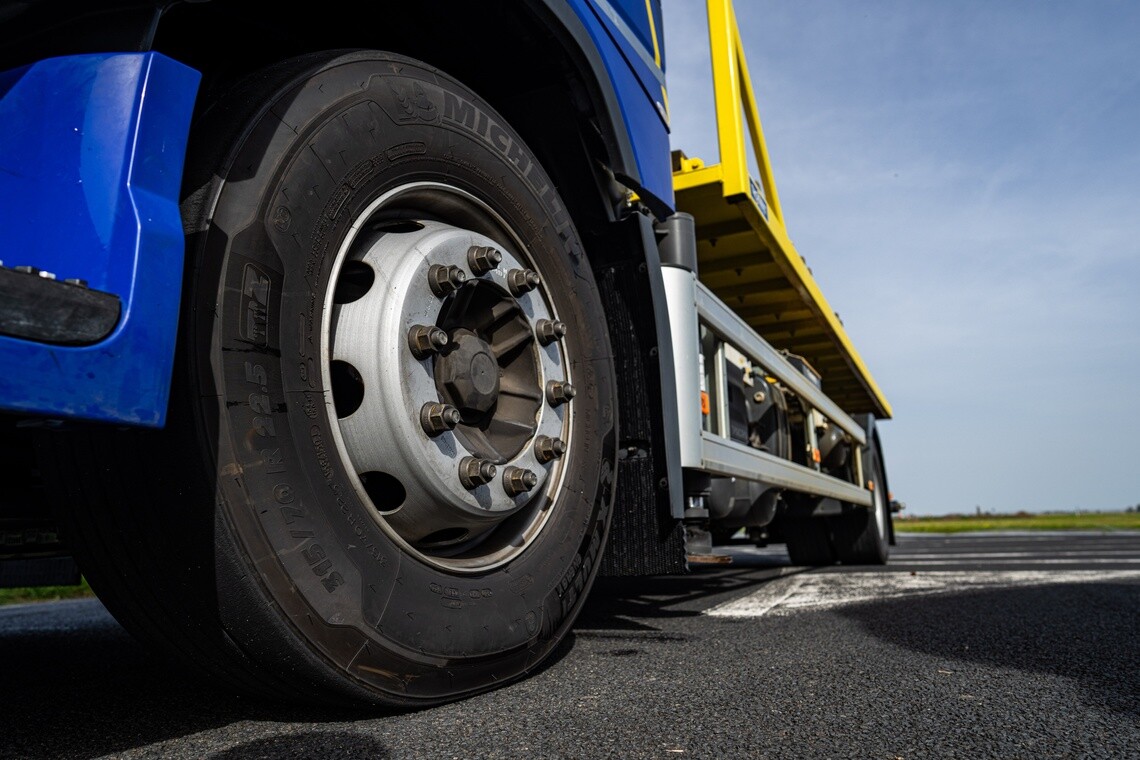
02 michelin offers two types of low rolling resistance tyres
Photo : JC)rC4me CAMBIER/MICHELIN
“The MICHELIN X® MULTI ENERGY™ Z2 and D2 range show markedly lower rolling resistance compared to previous generations,” notes Damien Bardin, Development Truck Tyre Designer. He adds, “That adds up to an estimated 5% of extra fuel savings compared to the previous MICHELIN X® MULTI range2 and you also get higher mileage.3 These low rolling resistance tyres therefore reduce the energy consumption of trucks.”
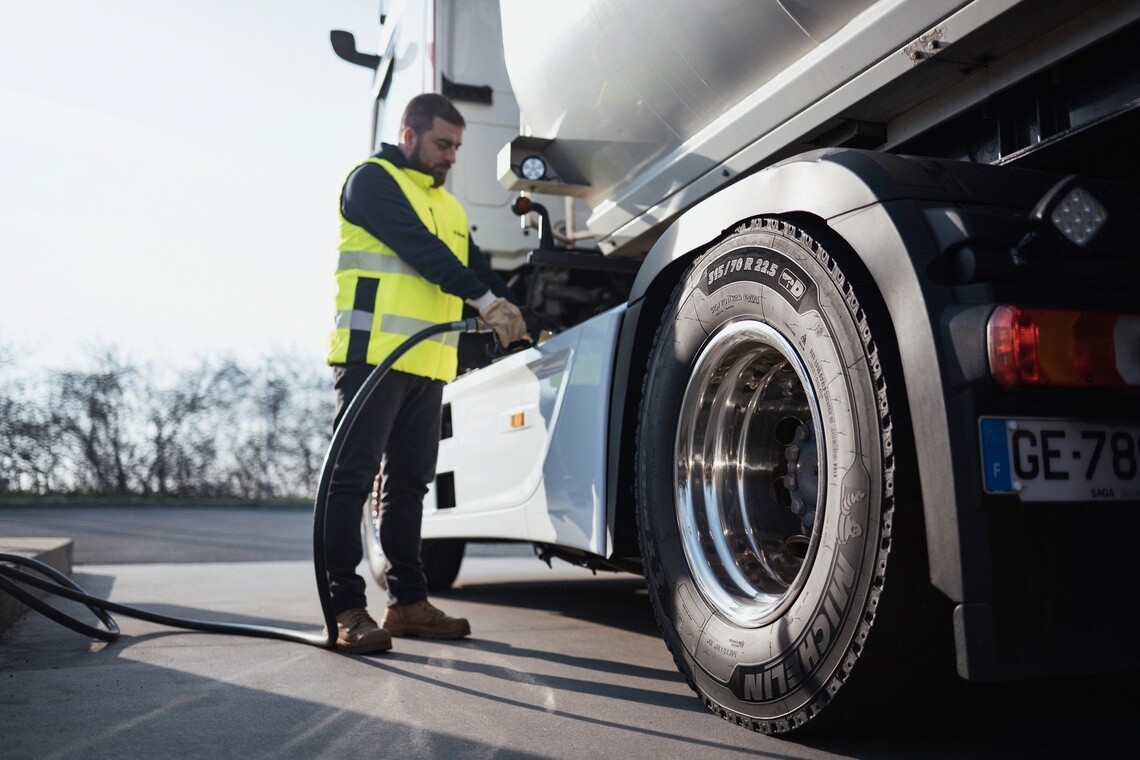
03 energy saving tyres
Fuel-efficient tyres on internal combustion engine vehicles:
Tyres account for around 30% of a diesel or gas-powered vehicle's fuel consumption.4
By minimising energy wasted through tyre deformation, Michelin's low rolling resistance tyres contribute significantly to fuel efficiency. Going from a C tyre in rolling resistance labelling to a B-rated tyre can result in an average saving over the life of the tyre of 0.6 litres per 100 km.5
Energy-saving tyres on electric vehicles:
MICHELIN X® MULTI ENERGY™ Z2 and D2 can offer +5% higher range and lower energy consumption vs. MICHELIN X® MULTI ENERGY™ Z and D6.
As electric trucks become more prevalent, we are learning more about the demands they place on tyres. Was this a major factor for the release of MICHELIN X® MULTI ENERGY™ 2 tyres?
Yes, a big focus for this next generation of tyres was to ensure they were suitable with the specific performance requirements of electric trucks, including load and torque. Adapted to EVs, this new generation offers strong casing endurance, higher range, and optimised noise levels.
How do these energy-saving tyres also offer high performance in terms of safety?
The MICHELIN X® MULTI ENERGY™ Z2 and D2 have the same grip potential as standard ranges when it comes to traction and braking. In terms of safety, lateral wet grip has been improved. They continue to offer long-lasting grip and traction in all road conditions, recognised by the 3PMSF marking7. At Michelin, we don't compromise on safety and quality.
Can we regroove and retread energy saving tyres to reduce energy costs and emissions?
Yes you can, and you should! When purchasing low rolling resistance tyres, you are investing in a more sustainable tyre fitment policy, with a tread pattern that can be regrooved and a casing that can be retreaded. “We recommend regrooving and retreading your energy saving tyres to extend their useful life, without compromising on safety,” Damien states. “That way you fully optimise your total cost of ownership.”
Your investment can also lead to improved fuel economy, better electric vehicle range, and lower maintenance costs. Fleets can measure the impact of regrooving using a sustainability impact calculator.
How do energy saving tyres help fleets reduce their environmental footprint?
“We designed the new MICHELIN X® MULTI ENERGY™ Z2 and D2 energy saving tyres to take your fleet further at less cost and with lower environmental impact,” explains Frédéric Domprobst, Pre-development Truck Tyre Designer at Michelin. “We measured their performance across the key variables of cost control, safety and quality, and environmental transition, and the results detail substantial performance improvement.”
“We have chosen the MICHELIN X® MULTI ENERGY™ range for their fuel efficiency, long-lasting performance, and reliable grip. We regularly regroove, swap, and retread them with the REMIX technology and monitor their pressure regularly. We obtain a mileage performance of 450,000 km on the rear axle.”
INTRA S.A., Poland. Jan 20208

04 michelin x multi energy z2 and d2
MICHELIN X® MULTI ENERGY™ Z2 and D2 are low rolling resistance tyres produce fewer particles and are 3 dB quieter than previous generations.9 Using 1.9 kg less in raw materials per tyre, Michelin has nonetheless made the new generation MICHELIN X® MULTI ENERGY™ Z2 and D2 highly robust and more eco friendly.10 The strong casing, manufactured with MICHELIN Powercoil, Infinicoil and Duracoil technologies, can be retreaded repeatedly to maximise tyre lifespan.
These energy saving tyres are so robust, in fact, that you can transfer them with no second thoughts between electric trucks, electric buses and traditional internal combustion engine vehicles. They withstand the higher loads (LI) 158 (+2LI) resulting in a total load carrying capacity of 8.5t on steer axles, often required by electric vehicles given the weight of the batteries.11
Energy saving tyres advantages: less environmental impact, more fleet efficiency
“MICHELIN X® MULTI ENERGY™ Z2 and D2 are fully in line with Michelin’s commitment to improving life cycles with each new generation of tyre,” says François Le Hen, Director of Product Marketing. He adds, “The Life Cycle Assessment for this new generation even scores better by up to 10% compared to previous generations.”12
By choosing MICHELIN X® MULTI ENERGY™ Z2 and D2 energy saving tyres, you’re choosing to boost your truck’s fleet efficiency ratings and your overall operational performance.
Is gallons per mile the key metric for understanding the true impact of energy saving tyres? Find out how to optimise your fleet’s fuel tracking.
FAQs
Energy saving tyres are specially designed to reduce rolling resistance, which in turn lowers fuel consumption and CO₂ emissions. Michelin’s energy saving ranges, such as the MICHELIN X® MULTI ENERGY™ Z2 and D2, use advanced compounds and tread designs to minimise energy loss during driving, making them well-suited for both combustion and electric vehicles.
Absolutely. Fuel-efficient tyres help reduce fuel consumption, leading to long-term cost savings. For fleets, this means lower operating costs, improved mileage, and a reduced environmental footprint.
The most energy-efficient tyres are those with the highest rolling resistance ratings, typically graded A, B or C under the EU tyre labelling system. These tyres are designed to minimise energy loss, helping reduce fuel consumption and CO₂ emissions. When selecting tyres, looking at the rolling resistance grade is a reliable way to assess their energy-saving potential.
Energy saving tyres are effective because they reduce the energy lost through tyre deformation, which directly impacts fuel consumption. By using advanced rubber compounds and structural technologies, these tyres offer better fuel economy, longer range for electric vehicles, and lower emissions.
1. International Council on Clean Transportation
https://theicct.org/wp-content/uploads/2024/03/ID-116-–-Euro-7-standard_final.pdf
2. Higher range and lower energy consumption:
MICHELIN X® Multi Energy™ 2 range +5% vs MICHELIN X® Multi range (internal calculations based on rolling resistance tyre test results & simulations).
3. Michelin OEMMileage: 315/70R22.5 MICHELIN X® Multi Energy™ Z2: 96 vs MICHELIN X® Multi Energy™ Z (100), 315/70R22.5 MICHELIN X® Multi Energy™ D2: 91 vs MICHELIN X® Multi Energy™ D (100), 315/80R22.5 MICHELIN X® Multi Energy™ Z2: 90 vs MICHELIN X® Multi Energy™ Z (100), 315/80R22.5 MICHELIN X® Multi Energy™ D2: 96 vs MICHELIN X® Multi Energy™ D (100). Internal study based on simulation tool, Ladoux Research Centre, 2024. Results may vary according to the road conditions, the weather conditions and the driving style.
4. Study mandated internally in December 2017 to Ducker Worldwide report, on a subject relating to vehicule maintenance costs and pains.
5. Michelin OEM 0.8L is the average deviation (VECTO value) measured between 2 labelling letters (B compared to C) for a new tyre. Simulation of an average saving over the life of the tyre of 0.6 litres per 100 km between a B-class tyre and a C-class tyre, for a vehicle travelling 150,000 km per year, for a fleet of 50 vehicles, with an assumed price of €1.45 per litre.
6. EV range increase: MICHELIN X® Multi Energy™ 2 range +5% vs MICHELIN X® Multi range (internal calculations based on rolling resistance tyre test results & simulations).
7. Grip and traction: 315/70 & 80 R22,5 MICHELIN X® Multi Energy™ Z2 & D2: Long lasting grip and traction whatever the weather. MICHELIN X® Multi Energy™ 2: Labelling Wet Grip C, iso vs MICHELIN X® Multi Energy™ (except for 315/70R22.5 MICHELIN X® Multi Energy™ Z: WG B). Grip until the last mm, being understood as until the minimum legal tread depth (1.6 mm). Please refer to the minimum legal tread depth in your country.
8. Interview with INTRA S.A. Poland. Jan 2020.
https://www.youtube.com/embed/SnJ2hdBHZsA
9. Noise: 315/70R22.5 MICHELIN X® Multi Energy™ Z2 vs 315/70R22.5 MICHELIN X® Multi Energy™ Z: iso; 315/70R22.5 MICHELIN X® Multi Energy™ D2 vs 315/70R22.5 MICHELIN X® Multi Energy™ D: +2 dB; 315/80R22.5 MICHELIN X® Multi Energy™ Z2 vs 315/80R22.5 MICHELIN X® Multi Energy™ Z: -3 dB; 315/80R22.5 MICHELIN X® Multi Energy™ D2 vs 315/80R22.5 MICHELIN X® Multi Energy™ D: -1 dB
10. Mass: 315/70R22.5 MICHELIN X® Multi Energy™ Z2 vs 315/70R22.5 MICHELIN X® Multi Energy™ Z: -0,5 kg; 315/70R22.5 MICHELIN X® Multi Energy™ D2 vs 315/70R22.5 MICHELIN X® Multi Energy™ D: +0.2 kg; 315/80R22.5 MICHELIN X® Multi Energy™ Z2 vs 315/80R22.5 MICHELIN X® Multi Energy™ Z: -1.9 kg; 315/80R22.5 MICHELIN X® Multi Energy™ D2 vs 315/80R22.5 MICHELIN X® Multi Energy™ D: -1.1 kg; -0.8 kg on average.
11. Load Index: 315/70R22.5 MICHELIN X® Multi Energy™ Z2 vs 315/70R22.5 MICHELIN X® Multi Energy™ Z: +2 LI, 158/150 L (154/150 M) vs 156/150 L, 8.5 t vs 8 t / +500 kg by axle; 315/70R22.5 MICHELIN X® Multi Energy™ D2 vs 315/70R22.5 MICHELIN X® Multi Energy™ D: +2 LI, 156/150 L (154/150 M) vs 154/150 L; 315/80R22.5 MICHELIN X® Multi Energy™ Z2 vs 315/80R22.5 MICHELIN X® Multi Energy™ Z: +2 LI, 158/150L (154/150M) vs 156/150L (154/150M), 8.5 t vs 8 t / +500 kg by axle; 315/80R22.5 MICHELIN X® Multi Energy™ D2 vs 315/80R22.5 MICHELIN X® Multi Energy™ D: iso, 156/150L (154/150M) vs 156/150L (154/150M).
12. Life Cycle Analysis score: 315/70R22.5 X Multi Energy™ Z2 vs 315/70R22.5 X Multi Energy™ Z: +3%; 315/70R22.5 X Multi Energy™ D2 vs 315/70R22.5 X Multi Energy™ D: +10%; 315/80R22.5 X Multi Energy™ Z2 vs 315/80R22.5 X Multi Energy™ Z: +0.5%; 315/80R22.5 X Multi Energy™ D2 vs 315/80R22.5 X Multi Energy™: +5.5%; +5% on average.
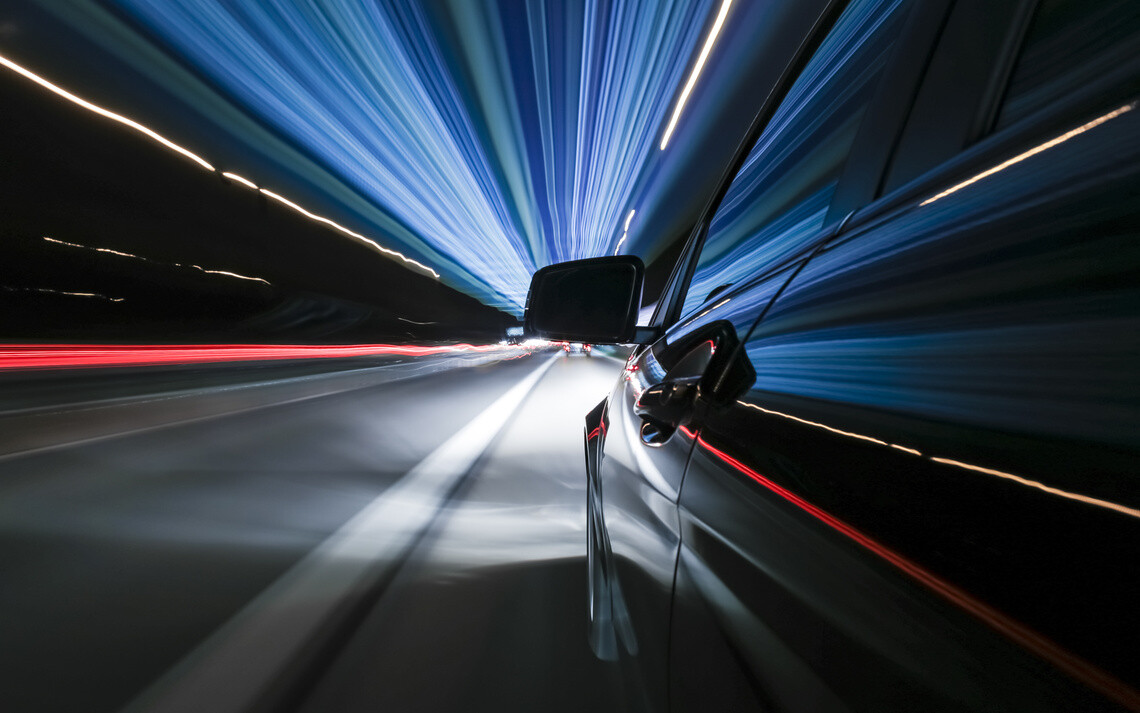
gettyimages 930571046
car going fast on a road by night
